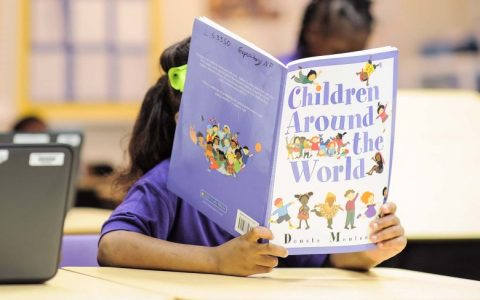We now know that reading and writing must be directly taught because of their immense complexity (Part 3). We also know that writing is labeled a “neglected skill” in U.S. classrooms (Part 1). And we learned that focusing solely on reading fluency will not result in writing proficiency; only teaching and practicing writing will do […]
In Part 1, we talked about writing instruction, and in Part 2 we looked at what is and isn’t innate to the human brain and learned that reading and writing will never “naturally” arise from our predisposition to communicate – they must be explicitly taught and practiced for people to become proficient. Today in Part […]
In Part 1, we discussed the state of writing instruction in the U.S. and it was a little grim. One of the reasons for this de-emphasis on writing instruction may be the persistent myth that writing will naturally arise out of reading – that a good reader will automatically be a good writer. But although […]
This is the beginning of a 4 part series on how the major ELA skills of reading, writing, and speaking & listening are taught in U.S. classrooms and how they should be taught, given what we know about the various regions of the brain required to read, write, and speak and how they’re connected (or […]
Weirdly, I ran across two pieces of research about the Middle School Model within a couple days of each other and they got me thinking about how confusing study results can be for the casual reader. One study asserted that NCLB had destroyed the Middle School Model (MSM), affecting test performance, while another concluded that […]
If you spend any time researching equity, you will begin to notice a pattern. It’s not a particularly overt pattern; it’s more like something that creeps into your field of vision from the edges. Only when you turn your full attention to it does it become glaringly obvious — so much so that you wonder […]
Book #4 in this series on equity resources is Cultivating Genius: An Equity Framework for Culturally and Historically Responsive Literacy, by Gholdy Muhammad. This book draws from the history of African American literary societies to create a framework for teaching and learning to address what is lacking in public schools for students of color: the […]
Book #3 in this series, Mathematics for Equity: A Framework for Successful Practice, edited by Na’ilah Suad Nasir, Carlos Cabana, Barbara Shreve, Estelle Woodbury, and Nicole Louie, is one that got me very exited about Math instruction. As a former English teacher, that is not a sentence I ever thought I’d type, but the instructional […]
The second book in our equity pedagogy series is We Dare Say Love: Supporting Achievement in the Educational Life of Black Boys, Edited by Na’ilah Suad Nasir, Jarvis R. Givens, and Christopher P. Chatmon. This book chronicles the program begun in the Oakland Unified Schools to address their most at-risk and underserved population: Black male […]










